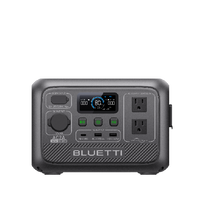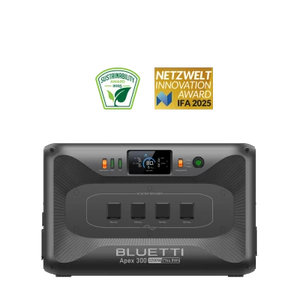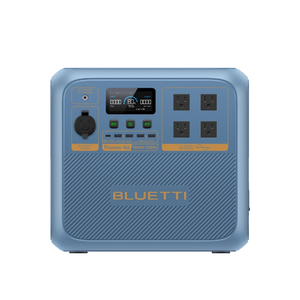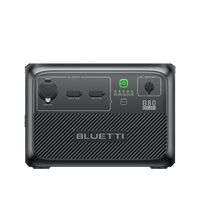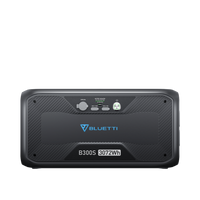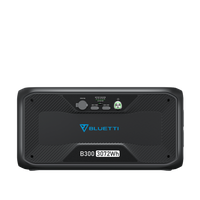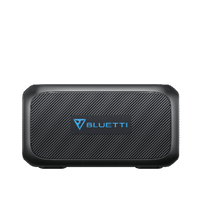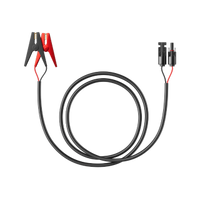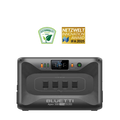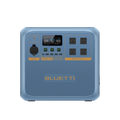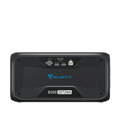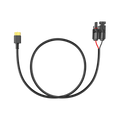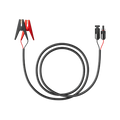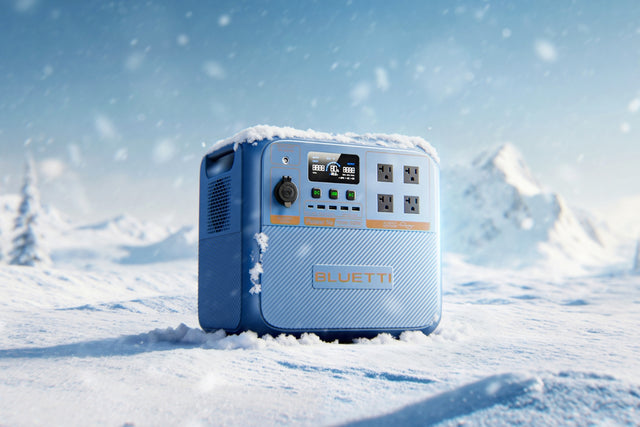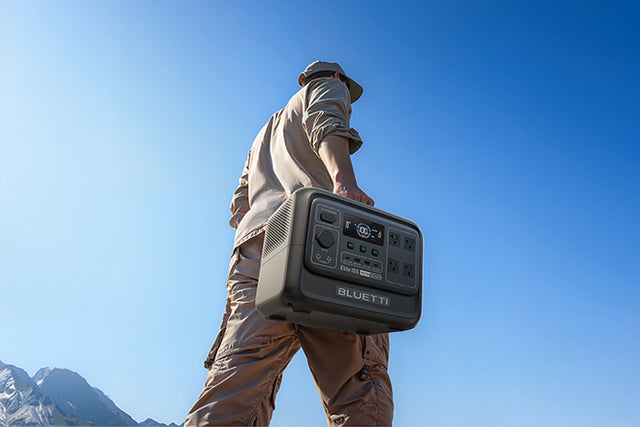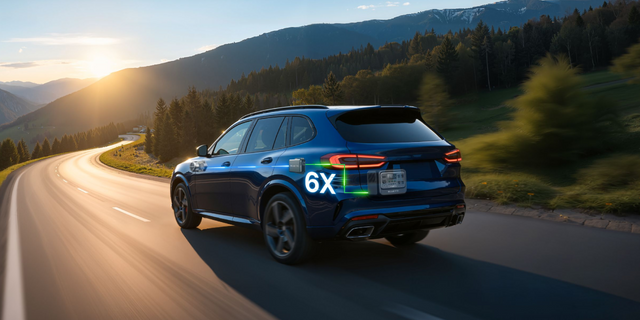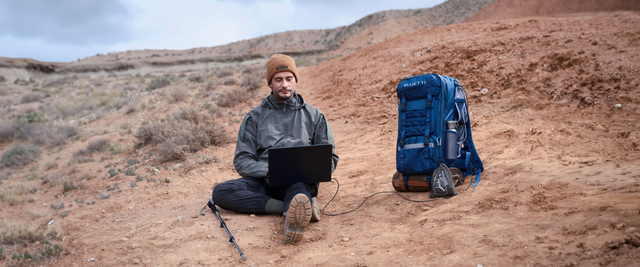Your cart is empty
Shop our productsCamping is a therapeutic outdoor activity that allows you to enjoy nature with minimal disturbance. Most campsites are miles away from an energy source, hence you’ll need to consider one as you plan your camping trip.
The use of solar panels is one of the most viable options. Equipped with solar batteries, a generator, and an inverter, you can enjoy endless electricity from solar energy. But how many solar panels will meet your energy needs? Let’s find out.
How Does Solar Power Work In RVs?

Take your RV with several solar panels on its roof. As you hit the road or park it during the day, the solar panels, thanks to the PV cells, will capture sunlight converting it into direct current (DC) energy. The electrical energy is then fed to the charge controller before reaching the batteries.
The charge controller, mainly the MPPT (Maximum Power Point Tracking) option controls how much current reaches the batteries.
The 12 volts DC power is used to power some of the devices and appliances in a camper. However, to power sensitive devices such as laptops and smartphones, you’ll need AC current.
This is where an inverter comes into play. It converts the DC current into AC current. As such, you can plug in your gaming console or coffee maker. While there are 120-volts ports in a typical RV, they are only practical when using a generator or your camper is plugged into shower power.
So, to take full advantage of solar energy, consider the following package:
- Solar panels
- Charge controller
- Batteries
- Inverter
How Many Solar Panels Do I Need to Run a Camper?
The number of solar panels needed to run your camper depends on several factors such as peak sun hours. Let’s look at some common factors.
Peak Sun Hours
Peak sun hours is how much sunlight a specific region receives in a day. One peak sun hour is achieved when the sun’s intensity reaches 1,000W of photovoltaic per square meter. For example, if an area receives 5 PSH (kWh/m2), it means it gets 5 hours of solar power.
Once you understand the peak sun hours of a particular campsite, you can determine how much solar energy you can generate in a day. There are several online resources that display average peak sun hours of specific regions.
|
Region |
Peak Sun Hours |
|
Southern East Coast |
4-6 |
|
West Coast |
5-8 |
|
Rocky Mountain |
4-5 |
|
Mid-West |
2-5 |
Power Consumption
Another factor that determines the number of solar panels is your average energy consumption. As you’d expect, each appliance will require a specific wattage to start and run.
To determine how many solar panels you’ll need, you need to calculate the starting and running wattage requirements of your devices.
First, determine the wattage requirements of the appliances you plan to plug into the RV’s generator. Here, calculate the starting and running wattage. For example, a refrigerator will have a starting wattage but a laptop won’t. Luckily, the wattage requirement is labeled on the appliances.
If your appliance’s power requirements are in volts or amps, you’ll have to convert them into watts. Here is a simple equation to do this:
Volts (V) x Amps (A) = Watts (W)
Add up the running watts of your devices. Ideally, the total should not exceed your generator’s capacity. If it does, consider buying a larger generator or use fewer appliances. You don’t want to overload the generator during operation.
Finally, identify the appliance with the highest wattage, and add it to the total running watts. The sum is the total starting wattage you need to operate your large appliances.
Starting and Running Watts of RV Appliances
|
Appliance |
Running Wattage |
Starting Wattage |
|
Washing Machine |
1200 |
2300 |
|
Microwave |
600-1000 |
0 |
|
Freezer |
700 |
2200 |
|
Coffee maker |
1000 |
0 |
|
Laptop |
50-300 |
0 |
|
TV |
500 |
0 |
Output Rating
Finally, you’ll need to consider the output rating of your solar panel. Assuming you have a 400-watt solar panel. It means it provides up to 400 watts per hour of energy. So, if you are camping in the Southern East Coast, which has 6 peak hours, each panel can produce 2,400 watts.
That said, environmental factors can affect how much energy is generated. If your average daily consumption is 4,000 watts, you’ll need at least two 400-watts panels.
In summary, the output rating, peak sun hours, and power consumption will determine how many solar panels you’ll need for your camper.
Things to Consider When Going Solar
There are other aspects you need to consider when installing solar panels on your RV. they include:
Type of Solar Panel
There are many types of solar panels but options for campers are either monocrystalline or polycrystalline panels.
Monocrystalline solar panels are made from a single silicon crystal. The crystal is cut into wafers. The pure silicon wafers are often dark black, long lasting and the most efficient. While efficient, they are more expensive and not overly sustainable since producing such solar panels leads to extensive silicon wastage.
As the name suggests, polycrystalline panels are made of many silicon crystals. The silicon fragments are melted rather than cut into wafers. This reduces wastage, making them more cost effective.
That said, they are less efficient in energy conversion. They are also larger hence may not be ideal for a camper. Furthermore, they are sensitive to high temperatures, reducing their lifespan significantly.
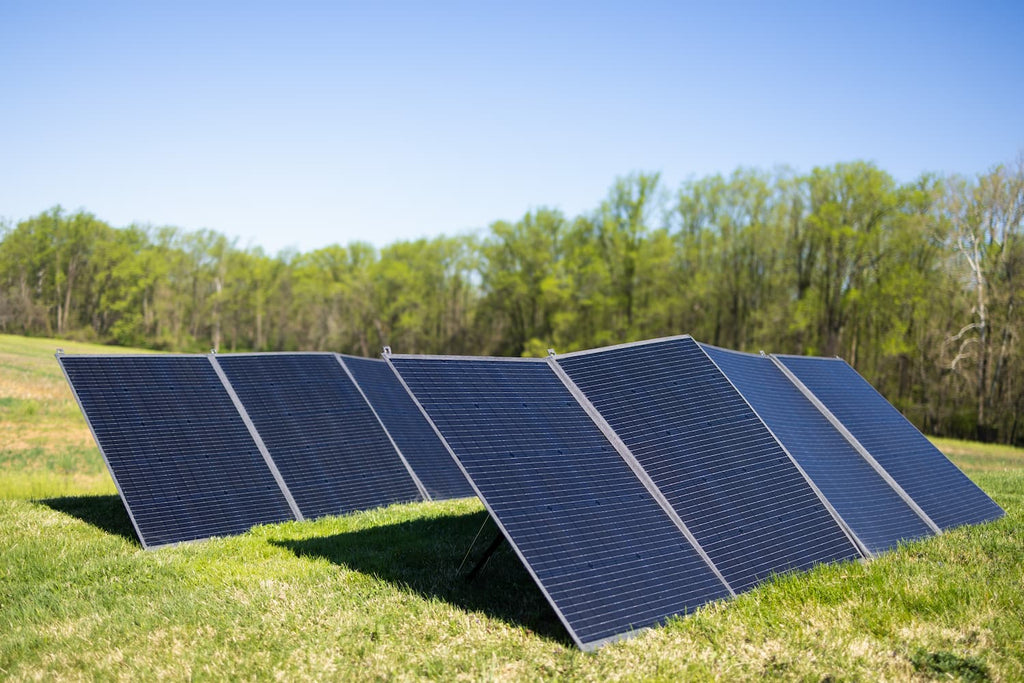
For the best camping experience, go for a 200-400W monocrystalline solar panel such as the BLUETTI PV420 Solar Panel. This model is foldable, easy to set up, and offers fast charging.
Budget
While you’ll not be paying monthly bills, you’ll need to consider other expenses such as fuel and laundry. And if you’ll be living off-grid, you’ll have to install a very efficient solar system. Buying a high-output solar panel such as a 400W or 600W can be a viable investment.
Installation Method
Do you need a permanent or temporary solar system? If yours will be temporary, then you’ll need portable solar panels. They don’t require installation and you can place them wherever you want. They are lightweight, easy to use, and foldable. This makes them ideal for transporting between different camping sites.
A permanent setup requires the installation of rigid solar panels on the RV’s roof. You’ll also require a dedicated generator. Most campers who opt for this setup use built-in generators and inverters.
Portable solar panels are the best of the two. Not only are they ideal for beginners but also offer more flexibility. That said, permanent setups ensure the batteries are charged even when on the road.
Would a Portable Solar RV Setup Be Better?
Yes, a portable solar system is better if you’ll be camping sporadically. It is also more viable if you are on a budget since a permanent setup requires specialized installation and wiring, which can easily break the bank. And here are two portable systems which you can opt for.
BLUETTI AC200P + 3*PV200

This BLUETTI solar generator kit comes with a generator and solar panels. The generator has a 2,000Wh capacity for running most of your RV appliances. It is also equipped with a 2,000W AC inverter, which allows you to connect most devices such as laptops and coffee makers.
The solar panels are foldable, lightweight, and easy to station. You can easily place them facing the sun for maximum energy generation. The generator also comes with wireless charging capabilities. So, keeping your iPhone running will be a piece of cake. Whether you want to use the air conditioner or an electric grill, this generator kit got you covered.
BLUETTI EP500 + 3*PV200

If you’ll be camping for an extended period, having a high-capacity generator is not an option. And the EP500 is the best option for you. Boasting of 5120Wh capacity, the power station can power most large appliances and charge small devices simultaneously. You also get a 2000W rated pure sine inverter for robust and stable electricity generation.
The best part is that it is movable. That means you can move it around the campsite with minimal effort. As you’d expect, the monocrystalline solar panels are highly efficient and long lasting for extended camping periods. You also get an app to monitor the power station and a smart touchscreen to control it.
Final Thoughts
As you can see, the number of camper solar panels depends on factors such as peak sun hours, solar panels’ maximum output, and average power consumption.
When choosing solar panels for your camper, consider the installation method, type of solar panels, and your budget.
You should also buy from reputable brands. And BLUETTI is among the most trusted on the market.
Shop products from this article
Be the First to Know
You May Also Like

What Does a 30% Federal Solar Tax Credit Mean and How to Apply?
Governments around the world are offering programs that encourage homeowners to switch to solar energy. Among the most notable programs is the 30% Federal Solar Tax Credit. It reduces your...

Deadly Flooding Devastates U.S. South and Midwest — What You Need to Know





